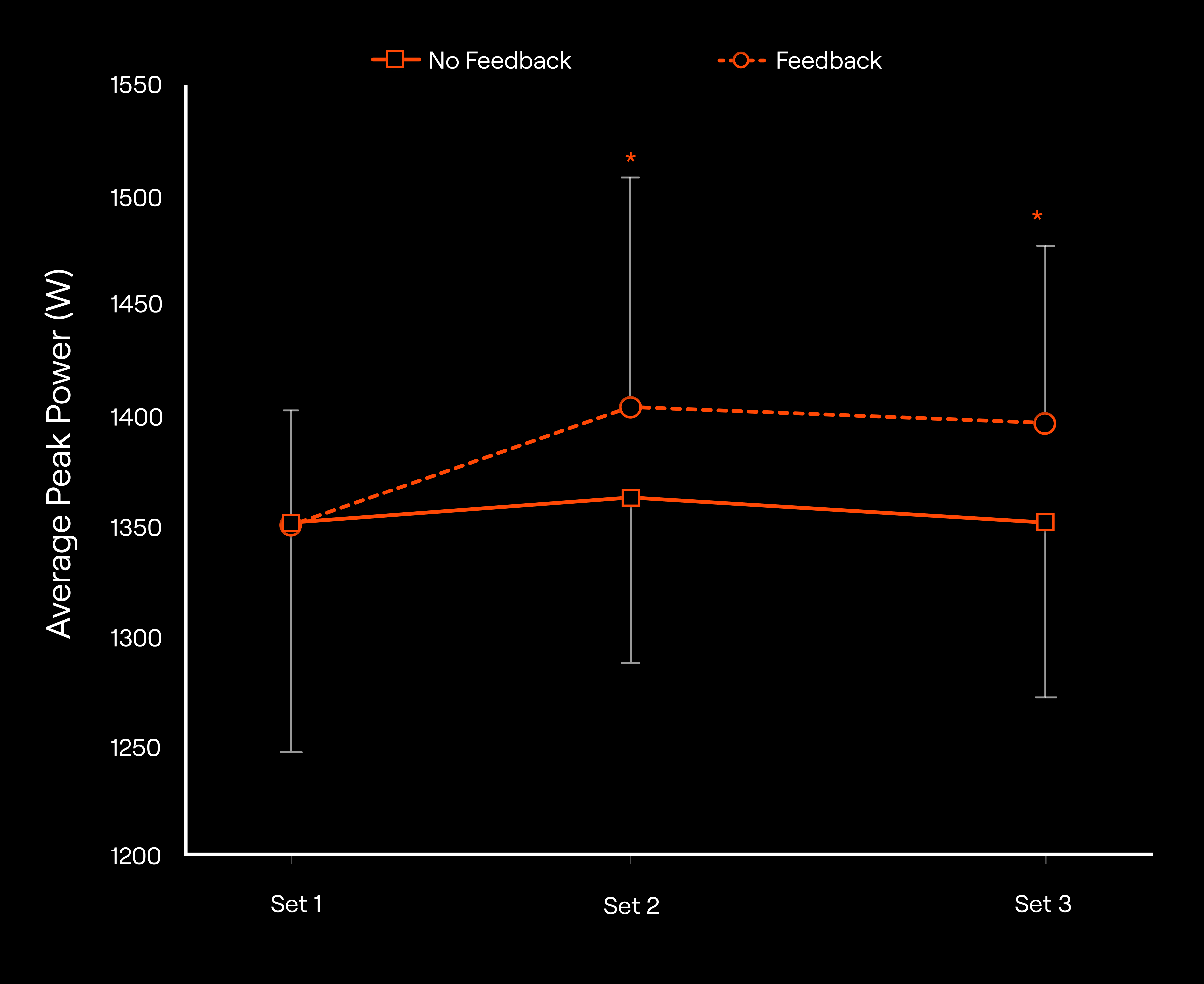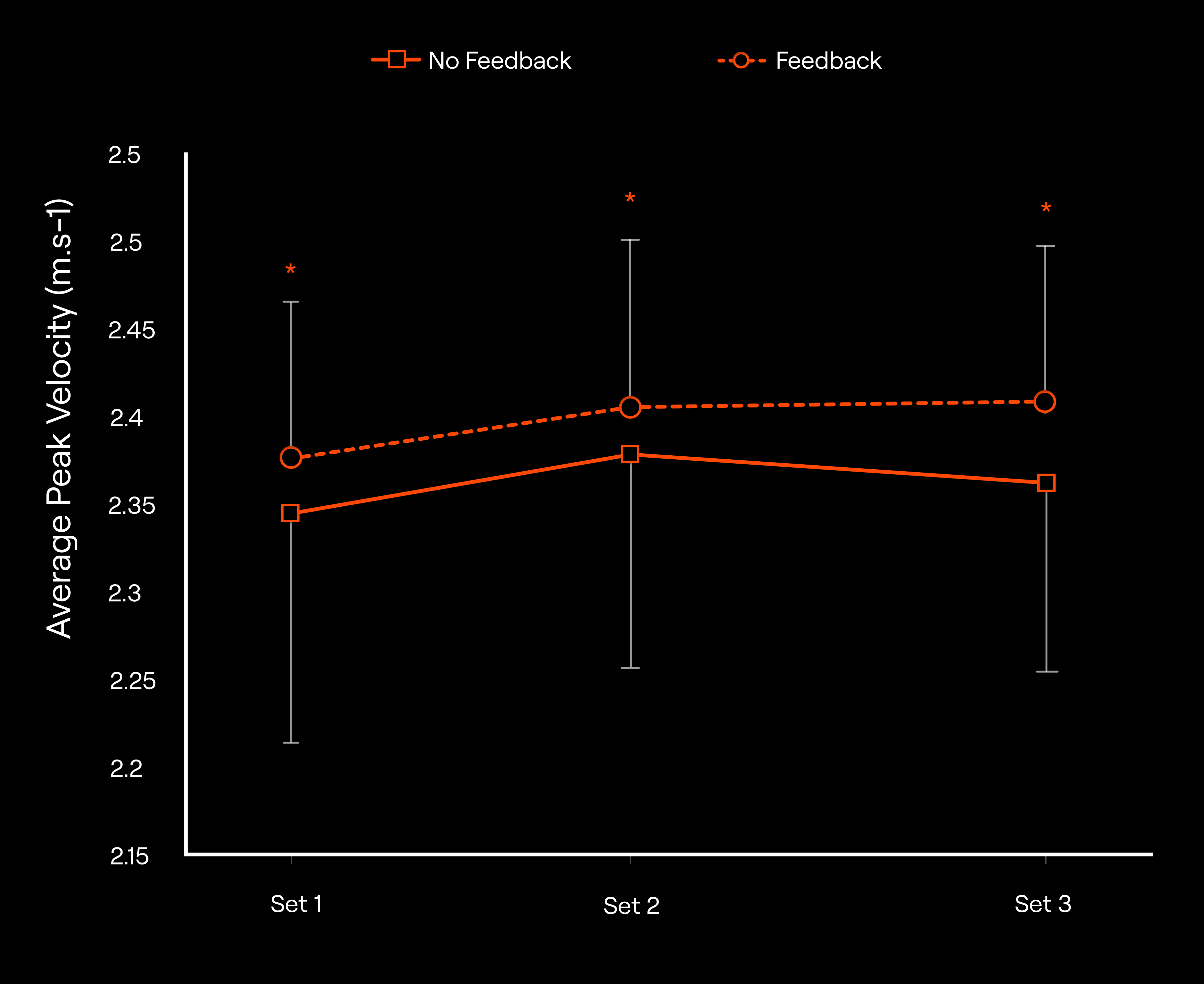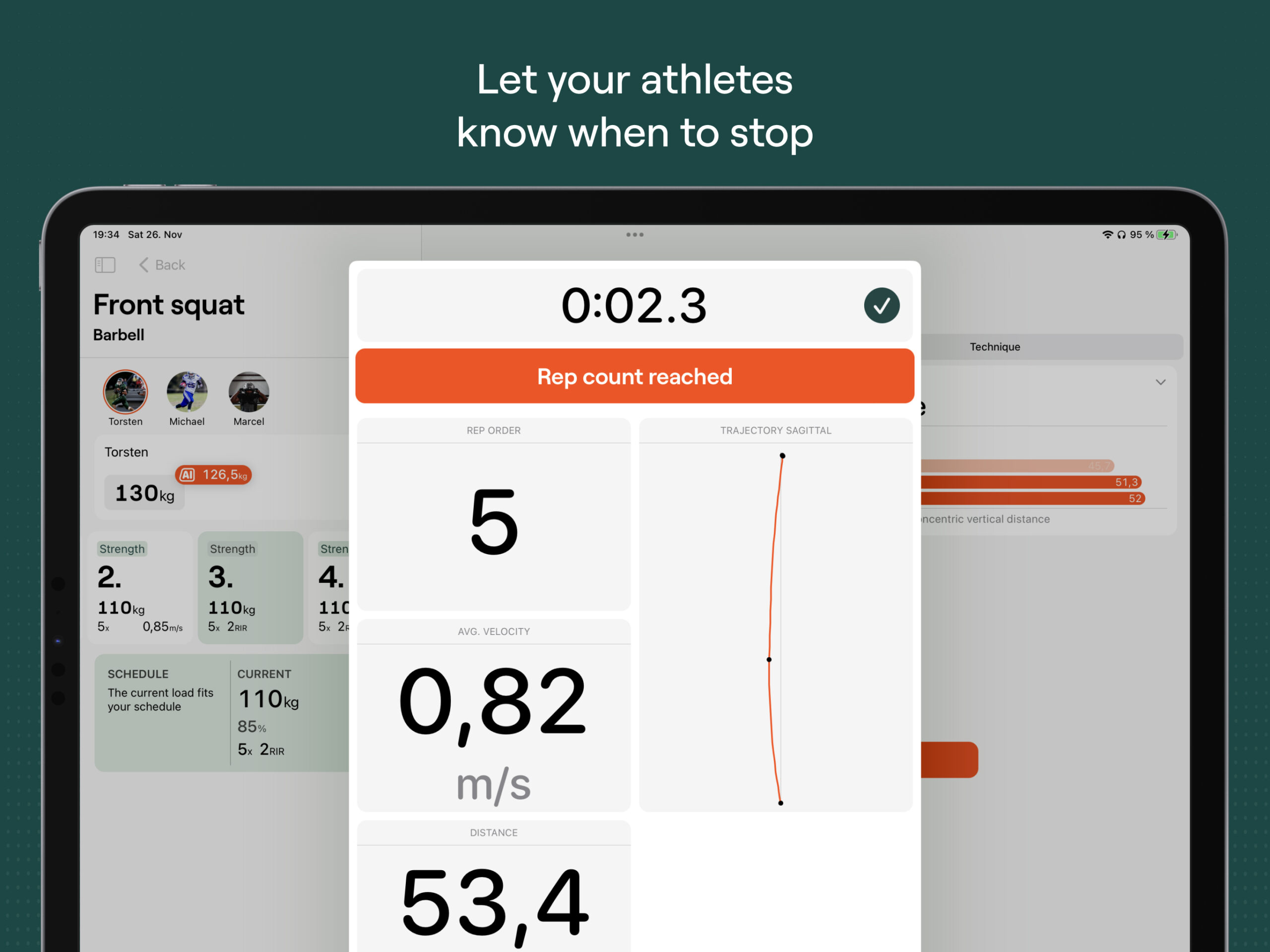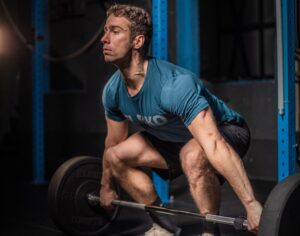Table of content
In one of the earlier articles in this series, we concluded that our athletes or clients can achieve greater training adaptations if we instruct them to perform repetitions during resistance training with maximal intent, all other things being equal. We also said that the ability of movement velocity to reflect our feelings about whether something is heavy, just right, or easy on a given day will increase if we provide maximal intent during training. To quickly remind ourselves why that is, think about the situation when your athletes or clients perform repetitions at a self-selected pace without trying too hard. Let’s say that you observe that their movement velocity dropped a bit or it’s lower with a given load than you anticipated it would be. Well, because they are not lifting with maximal intent, this observed drop in movement velocity could merely reflect the poor effort they provided while lifting (e.g., they were lazy that one set), but it could also be due to fatigue accumulation or a change in performance. The thing is that you, as a coach, wouldn’t really be able to tell with 100% certainty. Ok, why do we ramble on about things that we already covered? Well, the purpose of this article is to talk about a secret “weapon” of the velocity-based approach to resistance training. This “weapon” can be used to, among other things, ensure that our athletes or clients are lifting with maximal intent during resistance training. So, let’s see what this is about.
What is augmented feedback and how to implement it during resistance training
The ”weapon” we keep mentioning is augmented feedback which, in the velocity-based training context, refers to using velocity data to drive your athletes’ or clients’ motivation. In the realm of motor skill learning, augmented feedback is commonly categorized into two distinct domains: knowledge of results and knowledge of performance [1]. Knowledge of results pertains to the degree of success achieved in performing a skill in relation to the intended goal, while knowledge of performance involves information regarding the actual execution of the movement itself [2]. To illustrate this within the context of velocity-based resistance training, consider the objective of enhancing lifting velocity (i.e., the intent) using a specific load. In this scenario, the velocity at which the lift is performed would be considered as knowledge of results, as it directly reflects the intended outcome. On the other hand, the details encompassing the movement patterns exhibited during the lift, which contribute to the resulting velocity, would be classified as knowledge of performance. In this article, we will predominantly look at the knowledge of the result type of feedback, that is, the effects of knowing how fast you are moving or how high are you jumping on training adaptations.
Implementing augmented feedback in your work with athletes or clients can be as simple as setting up a smartphone or a tablet so that they can see the results of each repetition in real-time. This sort of feedback almost guarantees your athletes or clients will work harder to match or improve their efforts. Let’s say you are not entirely happy with the effort your athletes or clients put in during resistance training or jumping. If you provide them with feedback on how fast are they lifting a given load or how high are they jumping and ask them to outperform what they’ve just done, do you think it would work? Well, the research on the effects of velocity feedback on resistance training performance and training adaptations is pretty clear on this, so let’s dive in a bit.
Acute effects of augmented feedback on resistance training performance
One of the first studies that looked at the effects of augmented feedback during resistance training was conducted by Argus et al. [3]. The researchers had 9 elite rugby players performing 3 sets of 4 repetitions in the bench throw exercise on 4 separate occasions each separated by 7 days. Each athlete completed two sessions of the bench throw with feedback provided after each repetition and two identical sessions where no feedback was provided. Peak velocity and power were recorded for all repetitions, but only peak velocity was verbally provided to athletes after the completion of each repetition. During the sessions where athletes did not receive any feedback, the researchers only counted repetitions aloud. When feedback was received, there was a small increase of 1.8% and 1.3% in peak power and velocity of repetitions averaged over the 3 sets completed, respectively. The researchers also noted that the benefits of feedback may be greatest in the latter sets of training with the greatest increase seen for the last set in the bench press throw exercise (~ 3.1% increase in peak power). Collectively, it seems that receiving feedback can improve the rate of work done during resistance training and therefore the overall quality of the training session, especially as the training session progresses. While the benefits gained may appear small, it is important to keep in mind that Argus et al. [3] recruited elite rugby players. Indeed, it has been reported that elite rugby league athletes improve upper-body power by 5% in a 4-year period [4]. In this regard, an improvement of 1.8 – 3.1% in upper-body power in a single session is definitely worthwhile! Nevertheless, these findings are only for acute improvements, so let’s now see whether these acute improvements transfer to long-term training adaptations.


Chronic effects of augmented feedback on resistance training performance
Randell et al. [5], conducted one of the first studies that looked at the effects of instantaneous feedback (peak velocity) provided after each repetition in the squat jump exercise over a 6-week training block on the performance of sport-specific tasks. Thirteen professional rugby players were randomly assigned to feedback and non-feedback groups. During the training intervention, both feedback and non-feedback groups performed jump squats in 2 out of the 3 sessions each week with a controlled knee flexion angle of 90° and were instructed to execute each repetition as fast as possible. The feedback group received real-time feedback on their peak velocity following each repetition, while the non-feedback group performed the same protocol without any feedback. Even though both feedback and non-feedback groups generally improved their performance after 6 weeks of training, the improvements in performance were larger for the feedback group. More specifically, the feedback group had greater improvements in vertical jump (4.6% vs 2.8%), horizontal jump (2.6% vs 0.5%), 10m sprint (1.3% vs 0.1%), 20m sprint (0.9% vs 0.1%), and 30m sprint (1.4% vs -0.3%) performance. Therefore, it does seem that acute improvements typically seen when implementing velocity feedback during externally loaded exercises [3] lead to greater improvements in the performance of sport-specific tasks. However, do we really need to provide feedback after every repetition, or can we just look at the performance of our athletes or clients after each set and give them feedback on their average set performance during their rest? Also, what if we simply record our athletes’ performance and only show them the video of every repetition during their rest, would this be enough to improve their performance? One recent study precisely tackled those questions.

How often should we provide feedback during resistance training?
Nagata et al. [6] had thirty-seven collegiate male rugby players divided into groups immediate verbal feedback, video feedback, average verbal feedback, and no-feedback groups. All groups performed 3 sets of 5 repetitions of loaded jump squats twice a week for 4 weeks. The immediate feedback group received peak velocity feedback immediately after each jump squat was performed. In contrast, the average verbal feedback group received the average peak velocity after each set of jumps. Video feedback groups were video-recorded, and they were shown the video recording of their performance after each set without any numerical information on their peak velocity. Finally, no feedback was provided to the no-feedback group. After 4 weeks of training, the immediate verbal feedback group achieved the greatest improvements in jump squat peak velocity. Interestingly, no improvements in jump squat peak velocity, compared to the no-feedback group, were observed for average verbal feedback and video feedback groups after 4 weeks of training. Although this may suggest that only immediate verbal feedback “works”, it’s important to note that the frequency of feedback for these two groups was extremely low – precisely 4-5 times lower than in the immediate feedback group. Therefore, it seems reasonable to conclude that increasing the frequency of feedback by providing it to our athletes or clients after each repetition will optimize acute performance and thus training adaptations over the long term. Another interesting finding in this study was that receiving video feedback was not as stimulative as “numerical” feedback. It may be that the group that received immediate verbal feedback relied more on the external focus of attention. In contrast, the video feedback group received kinematic information pertaining to their jump performance, which may have promoted an internal focus of attention, thereby relying on task-intrinsic cues. This speculation makes sense based on the work of Wulf et al. [7] who suggested that an external focus of attention tends to yield superior outcomes in terms of maximum force production, speed, coordination, and movement efficiency, all of which are crucial factors for jump squat performance [8]. Therefore, a shift in the focus of attention from an internal to an external source of information might be responsible for greater gains in performance after receiving immediate and numerical feedback compared to the video recording. However, more research is needed to support this contention.

Are the feedback-induced adaptations retainable?
One last interesting finding from the study by Nagata et al. [6] is that the performance improvements remained noticeable in the immediate verbal feedback group 10 days after the training intervention. This means that the performance improvements were not dependent upon feedback. This is a valid concern for coaches wishing to implement feedback in their work with athletes or clients. Based on the “guidance hypothesis”, a high frequency of feedback may be detrimental to learning as individuals may become dependent on feedback with difficulty in retaining any form of learning effects once feedback is no longer provided [9]. In other words, our athletes or clients may become feedback-dependent. However, in the study by Nagata et al. [6], despite athletes receiving feedback after each repetition, their performance improvements remained even 10 days after the training intervention. This suggests that athletes did not become feedback-dependent but rather that they experienced true neural adaptations from lower body explosive training. Therefore, it seems that providing immediate verbal feedback (after each repetition) is a safe strategy to optimize performance during resistance training.
Why augmented feedback works
Ok, we get it, feedback “works”. But we still didn’t say why that is. Well, the study by Weakley et al. [10] recently shed some light on the potential mechanisms. The researchers had 15 sub-elite adolescent rugby players participating in their study to investigate the effects of visual kinematic feedback on mean concentric velocity, motivation levels, competitiveness, and perceived global workload during the back squat exercise. The athletes performed the back squat exercise on two separate occasions, once with visual kinematic feedback and once without any feedback. The feedback athletes received was on their mean concentric movement velocity. The two trials were spaced apart by a 7-day interval to minimize carryover effects. Prior to, and following the exercise, the athletes completed a questionnaire that assessed their motivation levels at that specific moment. Additionally, after completing the exercise, the participants filled out a questionnaire to gauge their levels of competitiveness and the overall perceived workload experienced during the task. These questionnaires provided valuable subjective insights into the psychological factors associated with exercise performance and the athletes’ perception of the task demands. As expected, the researchers found that athletes improved their mean concentric velocity during the back squat exercise when they were provided with velocity feedback. However, athletes’ motivation, competitiveness, and perceived workload were also greater when feedback was provided relative to when feedback was not provided. This led the researchers to conclude that the improvements in performance were due to improvements in motivation and competitiveness, which were in turn a result of the immediate feedback. Therefore, we should be aware of the power of immediate feedback and what impact it has on the psychological state of our athletes and clients.
After all this information, we can safely conclude that immediate feedback simply “works”. It will enhance acute resistance training performance, and this acute performance enhancement will carry over to greater gains over the long term. The underlying mechanisms responsible for these performance gains have been attributed to 1) an increase in athletes’ motivation and competitiveness [10] and 2) a shift in the focus of attention from an internal to an external source of information [6]. However, we still need to mention one thing that immediate feedback can help us with when working with athletes or clients and this is especially relevant to velocity-based training. At the beginning of this article, we again rambled on about the importance of providing maximal intent when drawing conclusions based on changes in movement velocity during resistance training. Well, it turns out that velocity feedback can enhance consistency in performance as evidenced by more stable velocity outputs on a repetition-by-repetition basis in a non-fatigued state [11]. More specifically, Randell et al. [11] had two groups of athletes performing 4 sets of 8 repetitions of squat jumps on 3 separate occasions. One group received velocity feedback immediately after each repetition, and the other one didn’t. The researchers found that the provision of feedback improved the consistency of performance across repetitions and sessions. This suggests that we can expect improvements in the consistency of the training stimulus if we implement velocity feedback in our work with athletes or clients. Not only that, but the provision of feedback would also enhance our ability to accurately monitor performance changes via movement velocity during resistance training. Perhaps, feedback could be used to ensure that our athletes or clients can better relate to what we want them to achieve when we instruct them “Move the barbell up as fast as you can”. Providing them feedback on how fast they are actually moving could prove beneficial in learning how to provide maximal intent during every repetition and remain consistent.
Conclusion
There you have it. We covered a lot in this article, but as usual, we only scratched the surface as there is so much more to say on the use of velocity feedback during resistance training. It is safe to say that velocity feedback during resistance training is a “game-changer” and you should definitely consider implementing it in your everyday practice with your athletes or clients.
References
- Yao, W. X., Fischman, M. G., & Wang, Y. T. (1994). Motor skill acquisition and retention as a function of average feedback, summary feedback, and performance variability. Journal of Motor Behavior, 26(3), 273-282.
- Magill, R. A. (2001). Augmented feedback in motor skill acquisition. Handbook of sport psychology, 2, 86-114.
- Argus, C. K., Gill, N. D., Keogh, J. W., & Hopkins, W. G. (2011). Acute effects of verbal feedback on upper-body performance in elite athletes. The Journal of Strength & Conditioning Research, 25(12), 3282-3287.
- Baker, D. G., & Newton, R. U. (2006). Adaptations in upper-body maximal strength and power output resulting from long-term resistance training in experienced strength-power athletes. The Journal of Strength & Conditioning Research, 20(3), 541-546.
- Randell, A. D., Cronin, J. B., Keogh, J. W., Gill, N. D., & Pedersen, M. C. (2011). Effect of instantaneous performance feedback during 6 weeks of velocity-based resistance training on sport-specific performance tests. The Journal of Strength & Conditioning Research, 25(1), 87-93.
- Nagata, A., Doma, K., Yamashita, D., Hasegawa, H., & Mori, S. (2020). The effect of augmented feedback type and frequency on velocity-based training-induced adaptation and retention. The Journal of Strength & Conditioning Research, 34(11), 3110-3117.
- Wulf, G. (2013). Attentional focus and motor learning: a review of 15 years. International Review of Sport and Exercise Psychology, 6(1), 77-104.
- Liu, C., Chen, C. S., Ho, W. H., Füle, R. J., Chung, P. H., & Shiang, T. Y. (2013). The effects of passive leg press training on jumping performance, speed, and muscle power. The Journal of Strength & Conditioning Research, 27(6), 1479-1486.
- Lai, Q., & Shea, C. H. (1998). Generalized motor program (GMP) learning: Effects of reduced frequency of knowledge of results and practice variability. Journal of Motor Behavior, 30(1), 51-59.
- Weakley, J. J., Wilson, K. M., Till, K., Read, D. B., Darrall-Jones, J., Roe, G. A., … & Jones, B. (2019). Visual feedback attenuates mean concentric barbell velocity loss and improves motivation, competitiveness, and perceived workload in male adolescent athletes. The Journal of Strength & Conditioning Research, 33(9), 2420-2425.
- Randell, A. D., Cronin, J. B., Keogh, J. W., Gill, N. D., & Pedersen, M. C. (2011). Reliability of performance velocity for jump squats under feedback and nonfeedback conditions. The Journal of Strength & Conditioning Research, 25(12), 3514-3518.




